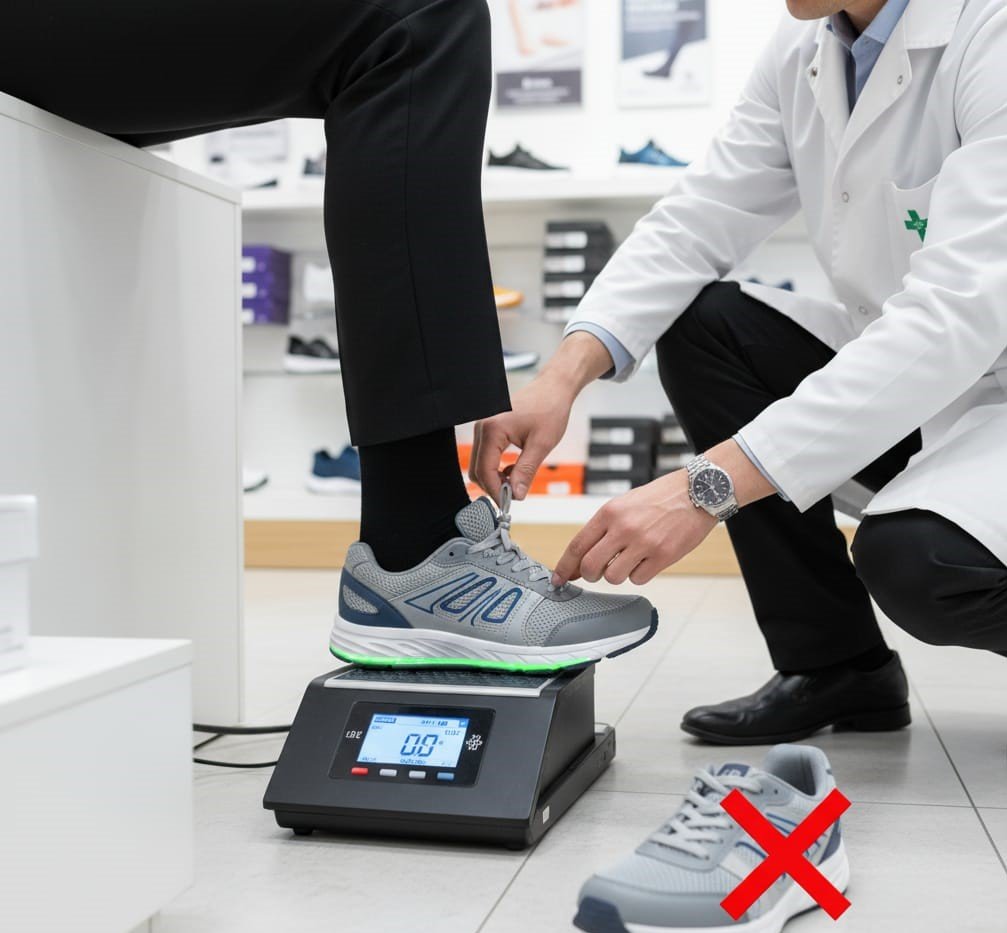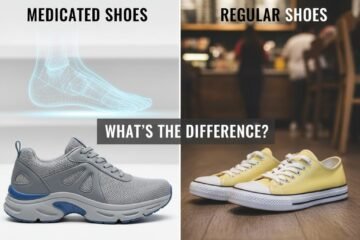🦶 Introduction – Why Fit Matters
Properly fitting shoes are critical for foot health, comfort, and overall well-being. Medicated shoes—designed with orthopedic or therapeutic features—can relieve pain, prevent injuries, and improve posture. But even the most advanced shoe can fail if it doesn’t fit correctly. Ill-fitting shoes can worsen existing conditions, lead to blisters, calluses, or even long-term foot deformities.
This article explores common mistakes people make when fitting medicated shoes and provides actionable tips to ensure your footwear truly supports your feet.
⚠️ Common Mistakes When Fitting Medicated Shoes
1. Ignoring the Need for Proper Measurements
Mistake: Relying on a general shoe size without measuring your foot.
- Why it matters: Foot size and shape change over time. Swelling, age, and medical conditions can affect your fit.
- Solution: Measure both feet (length and width) and fit to the larger foot. Do this at the end of the day when your feet are largest.
2. Overlooking Width & Volume
Mistake: Focusing only on length and ignoring width or shoe volume.
- Why it matters: Shoes that are too narrow compress the foot, causing pain, bunions, and circulation problems. Shoes too wide may allow sliding, leading to blisters.
- Solution: Check if the shoe is available in multiple widths. Ensure your toes have space to wiggle, and that the heel sits snugly without slipping.
3. Neglecting Socks and Orthotics
Mistake: Trying on shoes without the socks or orthotics you intend to wear.
- Why it matters: Thicker socks or custom orthotics change the fit. Shoes that feel fine barefoot may be tight with winter socks or inserts.
- Solution: Always try on shoes with your normal socks and any orthotics. Adjust laces or straps for proper tension.
4. Prioritizing Fashion Over Function
Mistake: Choosing shoes solely for style, ignoring therapeutic support.
- Why it matters: Medicated shoes are designed to protect foot health. Sacrificing support for fashion may worsen conditions like plantar fasciitis, arthritis, or neuropathy.
- Solution: Look for shoes that combine style and support. Many brands now offer aesthetically pleasing options without compromising features like arch support, cushioning, or stability.
5. Ignoring Walking & Standing Tests
Mistake: Choosing shoes based only on how they look or feel sitting down.
- Why it matters: Walking engages the foot differently than standing. Shoes may feel comfortable while seated but cause pressure points or heel slippage when walking.
- Solution: Walk around the store or home for several minutes. Pay attention to comfort, heel stability, and arch support during movement.
6. Not Accounting for Foot Changes Over Time
Mistake: Assuming one pair of shoes fits forever.
- Why it matters: Feet change with age, weight fluctuations, injuries, or medical conditions. Shoes that fit last year may no longer be suitable.
- Solution: Reassess shoe fit regularly and replace shoes every 6–12 months or as recommended by the manufacturer.
7. Neglecting Adjustable Features
Mistake: Ignoring shoes with laces, straps, or removable insoles.
- Why it matters: Adjustable shoes accommodate swelling, orthotics, or thicker socks. Non-adjustable shoes may feel tight or uncomfortable.
- Solution: Opt for shoes with adjustable laces, straps, or removable insoles to customize the fit.
📊 Common Foot Problems from Poorly Fitted Shoes
| Problem | Cause | Prevention |
|---|---|---|
| Blisters | Friction from tight or loose shoes | Ensure proper length & snug heel fit |
| Bunions & Corns | Pressure from narrow toe boxes | Choose correct width & room for toes |
| Plantar Fasciitis Exacerbation | Lack of arch support | Use supportive medicated shoes/insoles |
| Swelling & Circulation Issues | Tight shoes or non-adjustable designs | Check fit with socks; allow adjustable fit |
| Heel Pain | Heel slipping or improper cushioning | Walk test & padded heel cup |
✅ Tips for Ensuring the Perfect Fit
- Measure Your Feet
- Length, width, and arch height. Fit to the larger foot.
- Try on Both Shoes
- Feet are rarely identical in size.
- Walk Around
- Test comfort, arch support, and heel stability.
- Check Toe Space
- Your toes should move slightly, not feel cramped.
- Consider Your Foot Condition
- Use orthotics if prescribed and select shoes accommodating your foot health needs.
- Test with Socks or Inserts
- Ensure your everyday wear is accounted for.
- Listen to Your Feet
- If discomfort persists, the shoe may not fit correctly.
🌟 Final Thoughts
Properly fitting medicated shoes are more than a comfort choice—they’re a health necessity. Avoiding common mistakes like ignoring width, skipping walk tests, or neglecting orthotics ensures your shoes provide the maximum therapeutic benefit. When your feet are properly supported, you reduce pain, prevent injury, and improve your overall quality of life.
Invest time in selecting and fitting your shoes correctly; your feet will thank you for years to come.



